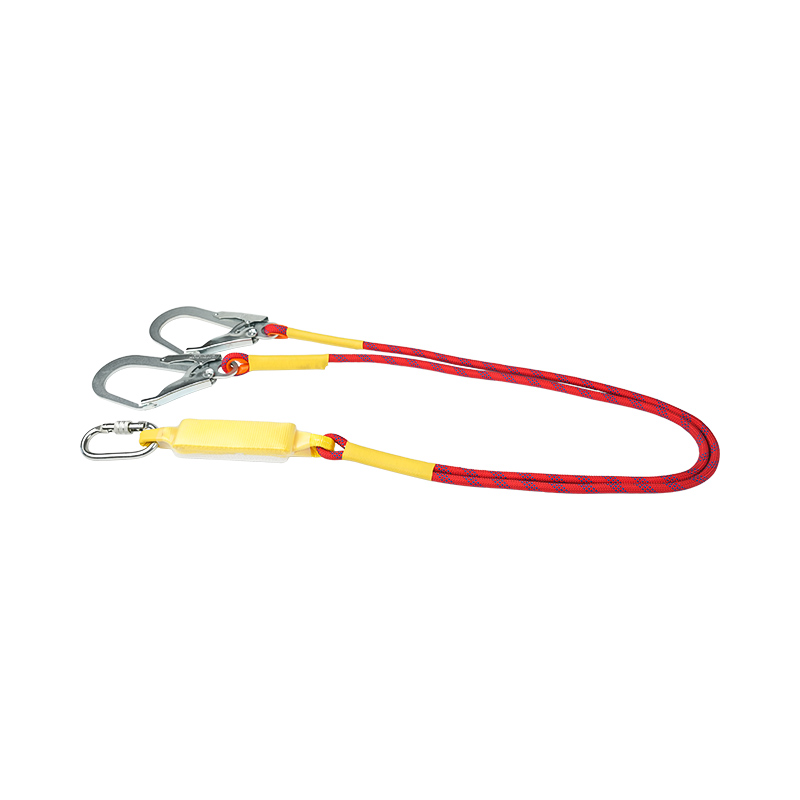Water rescue ropes are often used in emergency conditions where visibility is compromised—such as during nighttime, heavy rain, fog, or turbulent water environments. To enhance visibility and improve operational safety, various reflective and luminous materials can be integrated into the rope’s construction. These materials are selected based on their durability, visibility performance, environmental resistance, and compatibility with the rope’s mechanical properties.
Retroreflective Yarns or Threads:
Retroreflective yarns are among the most common materials used to improve nighttime visibility. These yarns are made by incorporating thousands of microscopic glass beads or prismatic particles into the surface of a synthetic fiber (usually polyester or nylon). When illuminated by a light source—such as a flashlight, headlamp, or searchlight—the retroreflective beads bounce the light directly back to the source. This effect makes the rope highly visible in dark environments, which is essential during search and rescue operations on lakes, rivers, or coastal waters. These yarns are often woven into the outer sheath of the rope in spiral or linear patterns for maximum coverage.
Photoluminescent (Glow-in-the-Dark) Fibers:
Photoluminescent materials absorb light from ambient sources (natural sunlight or artificial lighting) and emit it slowly over time as a visible glow. These materials are typically based on strontium aluminate or zinc sulfide compounds, which are known for their long-lasting and non-toxic luminescence. Glow-in-the-dark fibers can be woven directly into the rope sheath or applied as an outer coating. Once charged, they can emit light for several hours, enabling the rope to remain visible in total darkness. This feature is particularly valuable during nighttime flood rescues, blackouts, or underwater scenarios where artificial lighting is limited or absent.

Fluorescent High-Visibility Colors:
Fluorescent pigments are used in the manufacturing of rope sheaths to increase visibility in daylight or under artificial lighting. These colors—commonly neon yellow, orange, red, or green—stand out against natural backgrounds such as water, vegetation, or debris. Fluorescent colors work by absorbing ultraviolet light and re-emitting it as visible light at a longer wavelength, which enhances contrast. Although not reflective or luminous in low-light conditions, fluorescent colors greatly assist in visual tracking during daytime rescues and are often combined with reflective yarns to ensure 24-hour visibility.
Reflective Polymer Coatings or Finishes:
In some rope designs, reflective particles (such as aluminum flakes or coated microbeads) are embedded into a clear polymer coating that is applied to the surface of the rope’s outer sheath. This coating enhances light reflectivity while providing additional abrasion resistance. The coating process must be carefully controlled to ensure that the rope remains flexible, buoyant, and structurally sound. This method is less common than using woven reflective yarns but can be effective in applications where surface-level reflectivity is prioritized.
Composite Threads with Dual Visibility Functions:
Advanced rope designs may use composite threads that combine both retroreflective and photoluminescent properties. These hybrid threads are engineered to glow in the dark after charging and also reflect direct light from external sources. Such a combination ensures that the rope is visible in both complete darkness and low-light conditions where reflective materials alone may not be sufficient. This dual-function visibility is especially useful in complex rescue missions that transition between daylight, dusk, and night operations, or in confined-space water rescues such as tunnels, basements, or culverts.
Durability Considerations for Reflective and Luminous Components:
All reflective or luminous materials used in water rescue ropes must be tested for long-term durability under harsh environmental conditions. This includes resistance to UV radiation, saltwater corrosion, chemical exposure, and mechanical abrasion. The reflective/luminous components should not peel, fade, or degrade easily over time. High-quality ropes undergo standardized testing—such as ISO or ASTM visibility and aging protocols—to ensure that the visibility features maintain their performance throughout the rope’s expected service life.
The reflective and luminous materials integrated into water rescue ropes significantly enhance safety and effectiveness during emergency operations. Whether through reflective yarns, glow-in-the-dark fibers, fluorescent colors, or composite visibility threads, these features enable rescuers to quickly locate and track ropes even in poor visibility environments. When selecting a water rescue rope, it is important to assess not only the strength and buoyancy but also the quality and longevity of its visibility-enhancing materials.